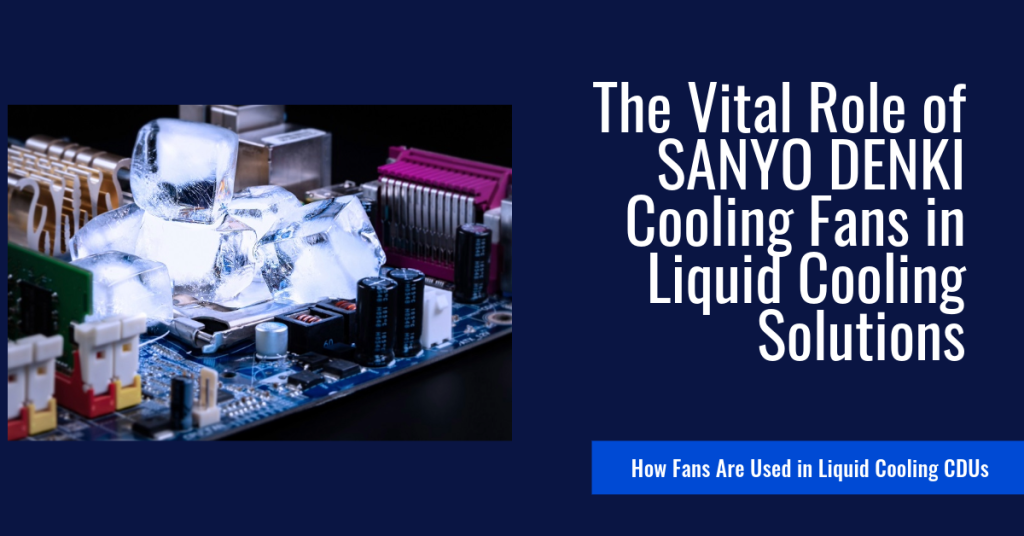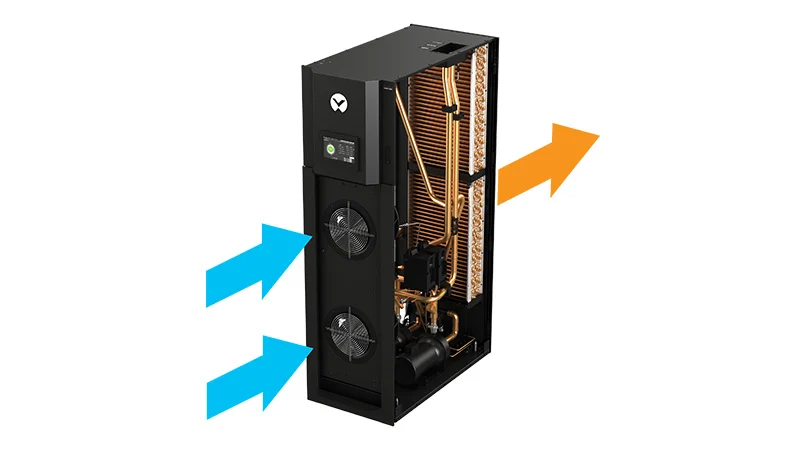Cooling Fan Technology by SANYO DENKI AMERICA
Providing Cooling Solution with High Performance and Reliability

As the demand for more efficient and powerful cooling solutions grows, SANYO DENKI continues to innovate and lead in the cooling fan industry. Our cooling fans are not only pivotal in traditional air cooling systems but are also integral to the latest liquid cooling technologies, particularly in Coolant Distribution Units (CDUs).
Liquid cooling has become a popular method for managing heat in high-performance computing environments, data centers, and other applications where traditional air cooling is insufficient. In these systems, cooling fans play a crucial role in maintaining optimal temperatures and ensuring the reliability and longevity of the equipment.
Coolant Distribution Units (CDUs) are essential components in liquid cooling systems. They manage the distribution and flow of coolant to various parts of the system, ensuring efficient heat transfer and cooling. Here’s how SANYO DENKI cooling fans are integrated into CDUs:

Cooling fans are used in conjunction with heat exchangers within the CDU. The fans help dissipate heat from the coolant as it passes through the heat exchanger, ensuring that the coolant is at the optimal temperature before it circulates back into the system.
Chillers play a crucial role in removing heat from the coolant through refrigeration cycles. SANYO DENKI cooling fans are integrated into chillers to enhance the heat exchange process by blowing air over the condenser coils, which helps to dissipate the heat absorbed from the coolant.
Manifolds distribute coolant evenly to various components within the liquid cooling system. SANYO DENKI cooling fans help maintain optimal temperatures by ensuring efficient airflow around the manifold, aiding in the effective distribution of coolant.
CDUs often include reservoirs that store the coolant. SANYO DENKI cooling fans are employed to cool the reservoir, preventing the coolant from overheating and maintaining a stable temperature throughout the system.
The pumps in CDUs, which circulate the coolant, generate heat during operation. Our cooling fans are strategically placed to cool these pumps, enhancing their efficiency and lifespan.
To prevent heat buildup within the CDU cabinet, SANYO DENKI cooling fans are used to ventilate the enclosure, ensuring that all components operate within safe temperature ranges.
SANYO DENKI’s cooling fans offer high airflow, high static pressure, and low power consumption, making them perfect for CDUs, chillers, and manifolds. Renowned for their reliability and efficiency, our fans excel in demanding environments, ensuring optimal performance for your liquid cooling systems.
As liquid cooling gains traction across industries, SANYO DENKI stands out with innovative solutions that evolve with our customers’ needs. Our engineers collaborate closely with clients to develop high-value products tailored to specific requirements, guaranteeing the success and efficiency of modern liquid cooling systems.
SANYO DENKI has been a trusted provider of cooling solutions for various industries, with fans being a crucial component in many advanced devices. Contact us for a quote, or to discuss your device's customization requirements.
Our experienced application engineers and field engineers will provide support on the customization or any other technical support for your equipment. Contact our representatives or distributors to start discussing your next project.
Contact Us